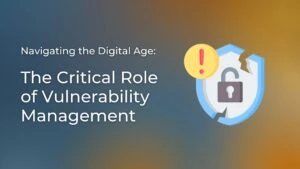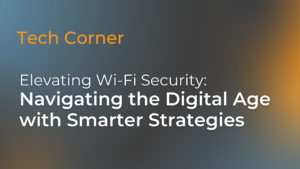In today’s world, where digital connections are as vital as the air we breathe, the security of wireless networks can’t be taken lightly. With cyber threats evolving at an alarming pace, protecting sensitive information, and maintaining the integrity of our networks is more crucial than ever. This piece explores how we can beef up our Wi-Fi security, putting a spotlight on the latest in encryption with Wi-Fi Protected Access 3 (WPA3) and the power of certificate-based authentication, all while diving into strategies to shield against a wide array of cyber threats.
Understanding the Threat Landscape
The digital realm is teeming with threats, each uniquely dangerous:
Data Interception Tactics: Imagine cybercriminals invisibly lurking, ready to snatch your data out of thin air. MitM attacks and Wi-Fi eavesdropping are real threats that make this possible, highlighting the need for encrypted communications.
Deceptive Traps: Then there are the digital mirages – Rogue Access Points and Evil Twin attacks – set up by hackers to trick you into handing over your data willingly.
Protocol Vulnerabilities: Some threats exploit weaknesses in the very protocols our networks use, like SMB or DNS, to redirect or manipulate our digital interactions.
Emerging Dangers: New threats, such as Advanced Persistent Threats (APTs), Wi-Fi phishing, and ransomware spread through networks, remind us that our defenses need to be as dynamic as the threats themselves.
Strengthening Our Digital Defenses
To combat these threats, we turn to WPA3, offering stronger defenses against attempts to guess our passwords and ensuring our data remains private on public networks. Alongside, the adoption of certificate-based authentication marks a shift towards a more secure way of verifying who gets access to our networks.
Broadening Our Security Arsenal
Integrating RADIUS/Entra: Imagine a world where only those with a verified digital ID card can access our network. That’s what integrating RADIUS servers with Microsoft Entra authentication does – it makes sure every connection is legitimate.
Multi-Factor Authentication (MFA): Just like a high-security building requires a keycard and a fingerprint, accessing network controls should require multiple proofs of identity, making it tougher for intruders to gain unauthorized access.
Encryption and HTTPS: By using advanced encryption and insisting on secure HTTPS connections for all our web activities, we can protect our data from prying eyes.
Proactive Anomaly Detection: Instead of waiting for an alarm, we can monitor our network traffic for anything out of the ordinary, catching potential threats before they escalate. This means keeping an eye out for unexpected spikes in traffic or devices behaving strangely, and having protocols in place to deal with these anomalies.
Regular Check-ups: Just like visiting the doctor, regular security audits and tests help diagnose and fix vulnerabilities, keeping our networks healthy.
Education: Finally, empowering everyone with the knowledge to recognize and avoid security threats is key. After all, the strongest security measures can be undone by a single careless click.
Wrapping It Up
In the vast and complex digital landscape, securing our Wi-Fi networks is not just a technical challenge but a critical necessity. By adopting a multi-layered security strategy that includes the latest encryption standards, stringent authentication processes, and an ongoing commitment to vigilance and education, we can navigate the digital age more safely, protecting our most precious digital assets from the myriad of cyber threats that lurk in the shadows.







